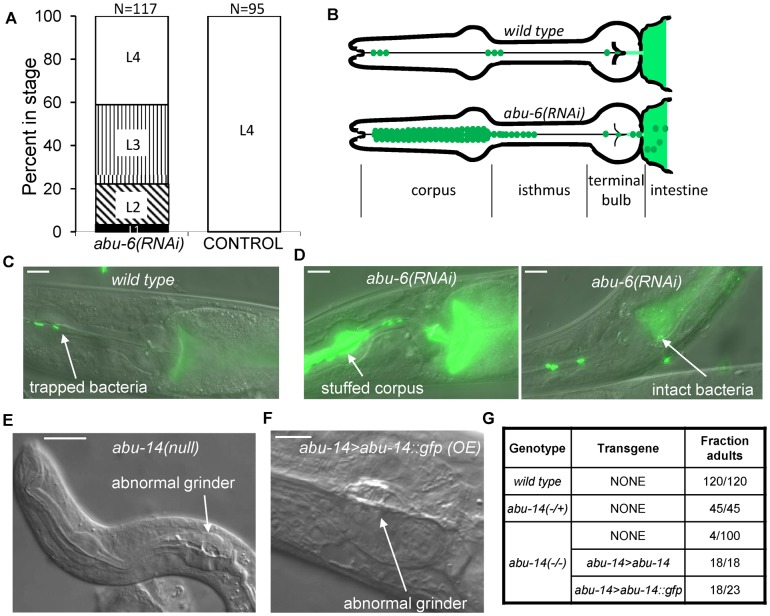Fig. 3. Disruption of abu/pqn gene function results in cuticular abnormalities in the pharynx and poor digestion of bacteria.
(A) Developmental delay of transgenic animals expressing myo-2>abu-6(RNAi) in comparison to control transgenic animals expressing abu-5>mCherry. White, vertical, diagonal, and black bars denote, L4, L3, L2 and L1 stages, respectively. (B) Cartoon depicting observations of feeding in wild-type animals and in abu-6(RNAi) animals. Normally, bacteria (green) are trapped in the corpus and anterior isthmus, and are disrupted by the grinder in the terminal bulb to release their contents into the anterior intestine (lighter color green). In abu-6(RNAi) transgenic animals, bacteria accumulate in the corpus and are poorly disrupted by the grinder, resulting in the presence of intact bacteria in the anterior intestine. (C) Example of a wild-type animal with bacteria trapped in the anterior isthmus and with disrupted green bacteria in the anterior intestine. Anterior is to the left. Scale bar is 10 µm. (D) abu-6(RNAi) animals fed fluorescent bacteria have a pharyngeal corpus stuffed with bacteria as well as intact bacteria in the anterior intestine. Anterior is to the left. Scale bar is 10 µm. (E) Aberrant pharyngeal development observed in an abu-14(ok1789) arrested first larval stage animal. Arrow indicates abnormal grinder. Anterior is to the left. Scale bar is 10 µm. (F) Aberrant pharyngeal cuticle in an adult animal over-expressing abu-14::gfp. Arrow indicates an abnormal grinder. Anterior is to the left. Scale bar is 5 µm. (G) In the absence of abu-14, most animals do not reach adulthood 3 days after hatching. This defect is fully rescued by a genomic DNA fragment containing the abu-14 gene and is partially rescued by a DNA fragment encoding an ABU-14::GFP protein fusion expressed under the control of an abu-14 promoter.

